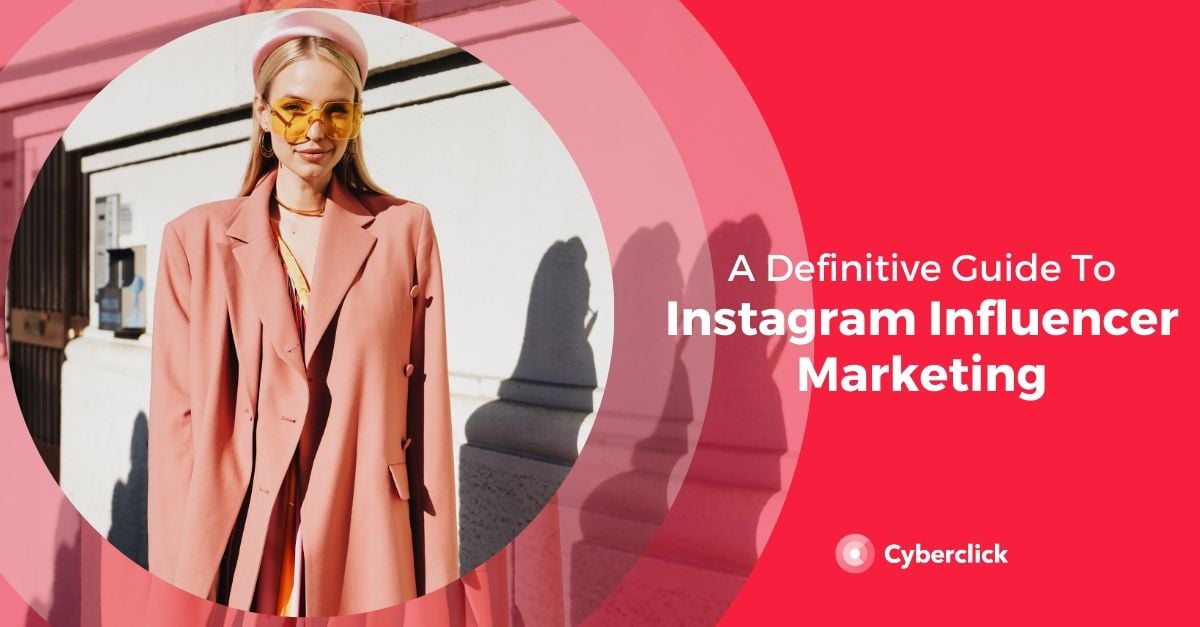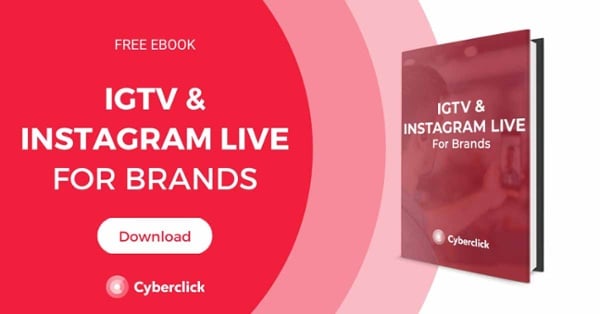By Shanon Roberts, on 5 March 2020
Influencer marketing has completely exploded in the last few years.
But, the term is often used vaguely and can confuse a lot of people. What exactly is Instagram influencer marketing, and how is it done in 2020?
Think of influencer marketing as the 21st century version of word of mouth marketing, with an extra punch. Instagram influencer marketing campaigns can just be simple post or full blown partnerships. In this article, I’ll explain what instagram influencer marketing is and how to do it in 2020, including a step by step guide.

What is Instagram Influencer Marketing?
Influencer marketing relies on influencers to promote a brand’s products or services. Rather than a brand promoting their product themselves, they partner with an influencer who then promotes the product in a natural and authentic way to their audience.
Instagram influencers are able to connect with their followers in a unique way by sharing pictures and videos about their lives and interests. Many times, the followers feel like they personally know the influencer, which is what makes Instagram influencer marketing so effective: when done correctly, the audience feels like they are getting a recommendation from a friend, rather than a sales pitch.
According to Influencer Marketing Hub, Instagram has become the most important channel for influencer marketing in the past year. This means that there are plenty of different ways for brands to participate in this tactic. Influencer marketing can include a simple social media post, or be a full fledged social media campaign with many different creative options and strategies.
There is no single type of influencer or criteria for being one. Generally, an influencer is someone with an online presence who has a substantial amount of followers, including celebrities, athletes, and social media personalities. When you decide to work with an influencer you can work either with them personally, or through an agency if they are very well-known.

Influencer Marketing Costs
The costs of influencer marketing can vary quite a bit and there is no standard price. For example, a single Instagram post can cost more than a Story, but a Story and Post combined will be more expensive than either option.
As a rough average, an influencer with 10,000 followers may charge $100 per post, while one with over 1,000,000 can charge upwards of $10,000. However, the costs really depend on the specifics of the influencer and what kind of campaign you want to do.
Suffice it to say, there are a lot of options when it comes to costs. Which is actually a great aspect of Instagram influencer marketing, because it means brands of all different sizes and budgets can potentially take advantage of this tactic.
Pricing can depend on two different factors: followers and engagement rates. Some influencers charge based on the amount of followers they have, while others charge based on how engaged of an audience they have.
While it may be tempting to choose an Influencer with the highest follower count, this often isn’t a smart choice. For marketers, an influencer's most important metric is their engagement rate because it shows how involved their audience is with the influencer.
Instagram Influencer Campaign: Step by Step
1. Create an Influencer Marketing Budget
As you can now see, costs can vary significantly. That’s why the first step of your influencer marketing campaign is decide on a budget.
If you do not have a high budget, consider working with a micro-influencer. A micro-influencer is a user who has a smaller following (between 1,000 to 10,000 followers) but their posts tend to have high engagement rates and they exist in a more specific niche. This option is more realistic for many small and medium-sized businesses. Micro-influencers are just as valuable as traditional influencers, and working with them can often give you more bang for your buck as you have more options.
If you have a large budget then you can consider working with a bigger or more well known influencer. But remember, bigger doesn’t always mean better. Do not get swept up by their large following, and remember to pay attention to their engagement rate and specific niche. Not matter how many followers they have, its a waste of resources to work with an influencer whose interests don’t match your industry or whose followers are not involved with.
2. Find Influencers
Once you’ve settled on a budget, then it’s time to figure out the influencers you want to work with. There are three main factors that you should consider when researching influencers:
- Their niche or interests (for examples, cars, electronics, beauty, etc.)
- Their engagement rates
- Their follower’s demographics
There are a few different ways you can go about finding influencers. I first suggest to take a look at your competitors and see which influencers they work with. This gives you a list of influencers to not work with, as well as a base to see the nature of influencer marketing for your industry.
Also take a look at the most well known figures or influencers in your sector. Depending on your budget and their expenses, you can start contacting them. If they are too big for your brand, take a look at the types of hashtags and keywords they use and see if you can use those to find other influencers interested in the same topics.
Google is your best friend during this process. The influencers want to be found just as much as you want to find them, so search far and wide on Google using different keywords and search terms. Oberlo has a very good guide on how you can use Google to find influencers.
Once you’ve settled on a few different influencers you’re interested in, take a look at their comment sections and see how their followers interact with them. Especially take a look at other promoted posts they’ve done with other brands to get a sense of how their followers feel about their partnerships and brand work. This may give you ideas of what works and doesn’t work for their audience.
3. Campaign Planning
Once you’ve found your influencer then you must consider the type of Instagram influencer campaign you want to carry out. There are many different ways you can work with influencers, including doing single promoted posts or full blown partnerships.
Often times the influencer will have recommendations of what works best with their audience and what kind of campaigns they have the most success with. For example, some influencers have a lot of interaction on their Instagram stories, but not so much in the normal posts. Or vice versa! I recommend customizing your campaign to each influencer you work with and, more importantly, their audience.
Sometimes brands will ask influencers to post a specific copy or showcase the product in a certain way, and sometimes brands will allow the influencer to take the reigns. Depending on the influencer and the type of campaign you want to do, decide what would work best for your campaign. This is something you can discuss with the influencer after you contact them, which leads us to our next point.
4. Contact the Influencer
You’ve done it! You’ve figured out your budget, done all your research, cross all your T’s and dotted all you I’s. Now you only have one step left: contact the influencer.
Depending on the influencer you want to work with you may have a few different options for reaching out. If they are a micro-influencer or they do not work with an agency then they will often times either have their email on their Instagram profile or you can even send them a direct message on the app.
If they work with an agency then they have their agent’s contact information on their Instagram bio or website. In this case you will have to work directly through their agency.
Regardless of how you contact them, there are a few essential pieces of information you should include in your first message.
- Ask for their fees and metric numbers
- Explain your brand, the product or service you’re promoting, and the goal of the campaign
- Your budget
- The number of posts you want to do
- The type of content or ideas you have
- Any additional questions you may have
Try to customize your email for each influencer you contact. Keep your messages professional and friendly.
With this guide you’ll be way on your way to crushing your next Instagram influencer marketing campaign. Instagram influencer marketing is an exciting avenue for many brands. In just the few years it has been around it has evolved in very quickly, so we expect to see a lot more exciting developments in the next few years.


